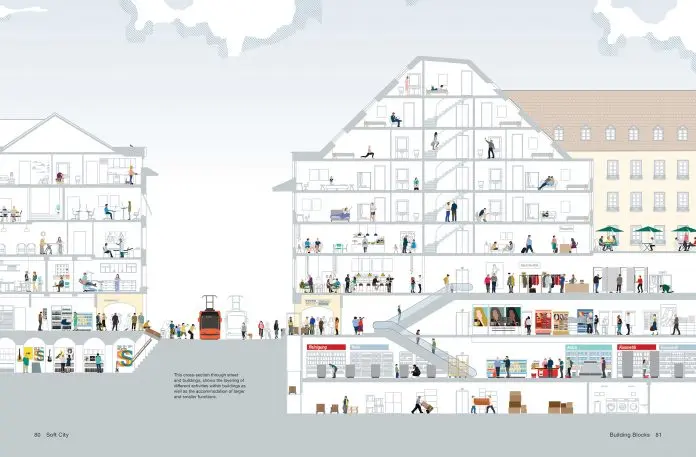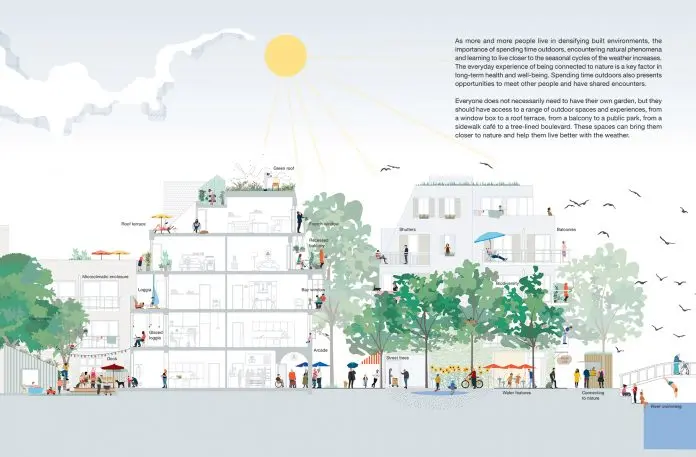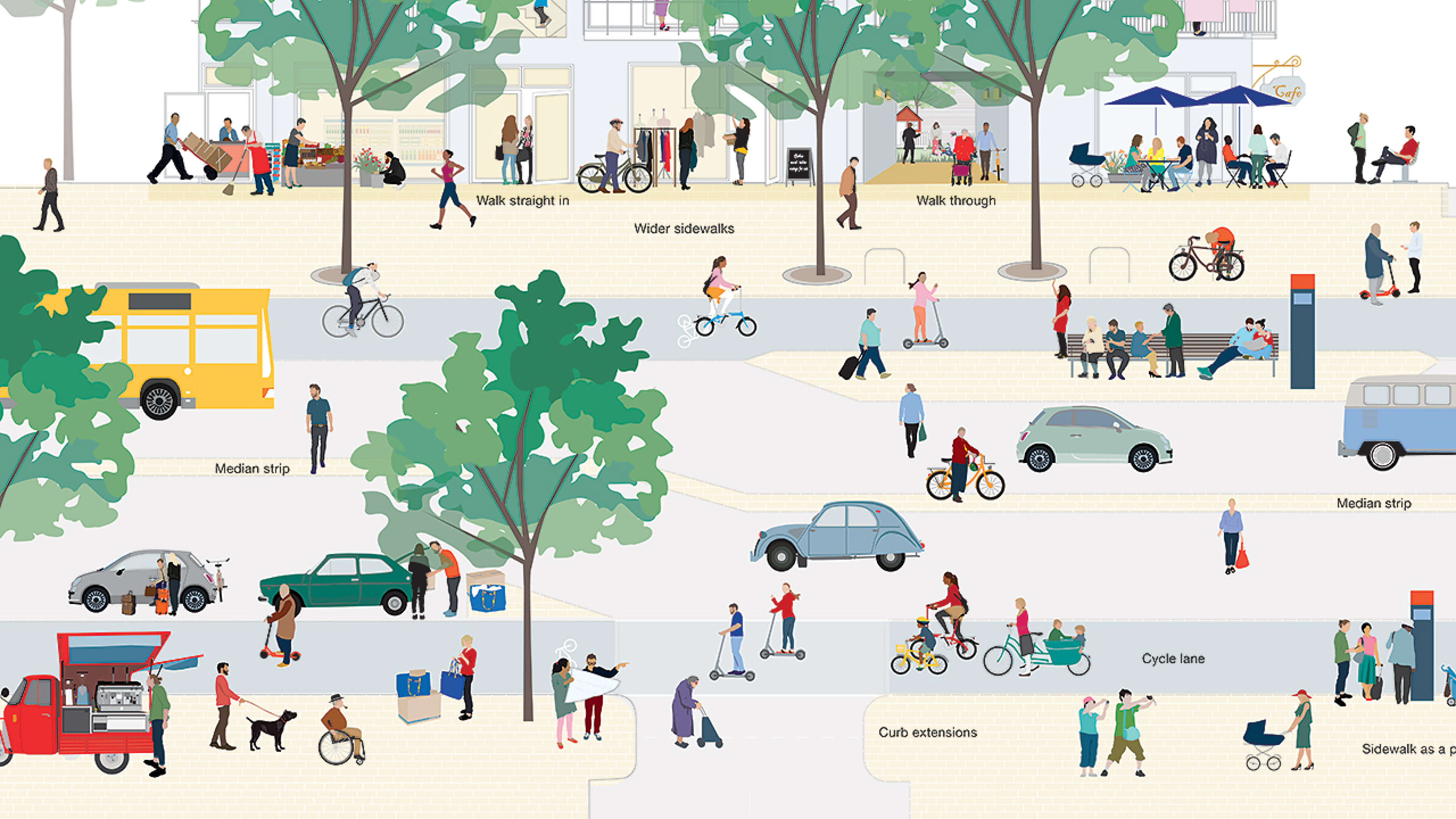Imagine yourself sitting in your home. What’s right outside your front door, and what’s within a 10-minute walk of it? Can you make it to a grocery store or a café on foot, or do you have to drive? Is there a shared space nearby, a park or a patio, where you can mingle with the people who live around you? Do you often see people out and about, or do your neighbors mostly stay inside? What about the street: Is it filled with only cars, or do you see people biking and taking transit? Do you feel safe walking on the sidewalk that lines your front door (if there even is a sidewalk)? Are there places to sit along it?
This list could go on much longer. It’s just a sample of the kinds of questions that preoccupy David Sim, creative director and partner at Gehl. Based in Copenhagen, Gehl has long pioneered the idea of human-centered urban design. Rather than thinking about cities as a collection of buildings and impressive developments, designers like Sim thinks about them as a series of relationships: between people and place, people and planet, and people and other people. “The starting point is not a big, architectural urban idea—it’s about being a little human being, and how can you connect that human being to as many experiences as possible,” he says.
Good cities, from Sim’s perspective, are ones that make these connections possible. They can look different and exist in different contexts, but they share an overarching and essential quality, which Sim calls “softness”—a stark contrast to the rhetoric of “grind” and “harshness” that’s often applied to urban life.

As it turns out, “softness” can comprise quite a bit. But the easiest way to think about it is to consider the idea of the boundaries that you feel as you move about the city, and how they can start to come down. “For decades, so much urban planning has been focused on devising ways to reorganize human activity into distinct silos, to separate people and things, and, by doing so, reduce the risk of conflict,” Sim writes. “I would like, instead, to focus on how potentially conflicting aspects of everyday existence can be brought together and connected to deliver quality of life.”
One way to do so that stands out: creating what Sim calls “layered” buildings. Certainly in much of the U.S., buildings are designed to serve a single purpose. There are apartment buildings, office buildings, and commercial buildings. An appropriate analogy here is the dinner plate. Say you have a meat dish, some vegetables, and a pasta on the same plate. You can keep them separate and ensure they don’t touch each other and in that way, consume three distinct things. Or you can let them blend on the plate and experience them as a complete meal. A “layered” building is the architectural version of the latter. In Soft City, Sim cites the Spektrum building in Gothenburg, Sweden, which has a bowling alley in the basement, a restaurant and shops on the ground floor, a school on a few of the middle floors, and and coworking and office spaces scattered throughout. To someone used to these amenities being housed in distinct structures, this may seem disorganized or random, but Sim illustrates how highly functional it is, and how it fosters relationship-building across generations and contexts.
“It’s about density and diversity,” Sim says. “Density on its own is not interesting.” In other words, it’s not enough for cities to contain many buildings close together: What makes them work is if the buildings themselves support a multitude of resources and interactions.

The design interventions that can support softness and the relaxation of boundaries in a city are numerous and can be added to cities, Sim says, with generally little cost and without the need for advanced technology.
Locating a sidewalk cafe on the sunny side of the street encourages people to linger, for instance, and designing wider sidewalks enables the existence of such cafes in the first place. A building designed to encircle a courtyard can support the same amount of density as a rectangular tower, but the courtyard offers a communal space, sheltered from harsh weather, where people can gather. There’s also a possibility of adding small retail like cafes on the ground floor in courtyards to activate the space and extend the streetscape. And creating multiple entrances into a building, Sim says, perforates the boundary between the streetscape and what happens inside buildings so the lived experience of a person becomes one in which the whole city feels more accessible and connected, and much softer.
“The neighborhood is built on relationships,” Sim says. “How quickly can you get out to your yard and onto your street, how connected are you to your place and to other people in it?
Recognize your brand’s excellence by applying to this year’s Brands That Matter Awards before the early-rate deadline, May 3.
